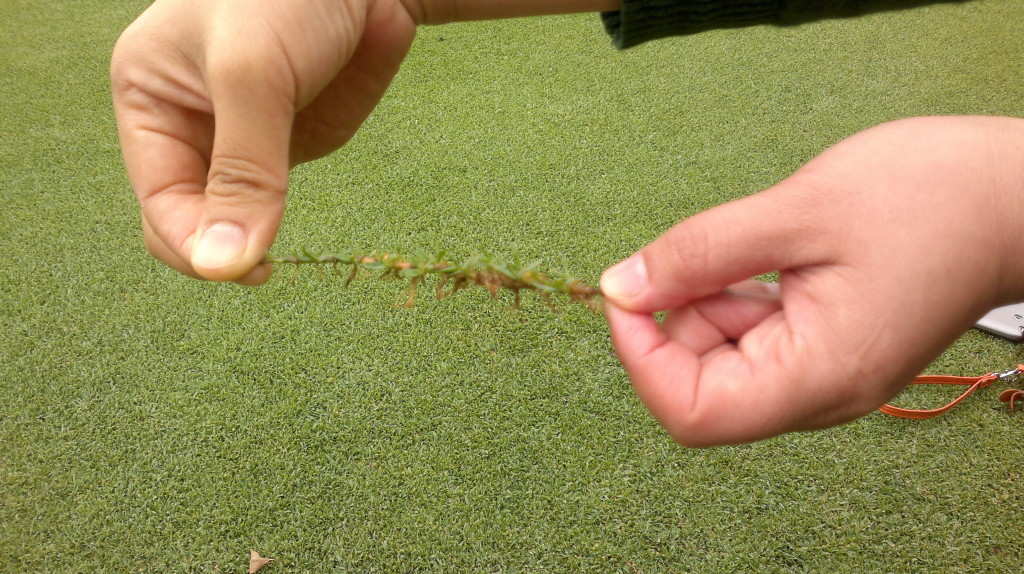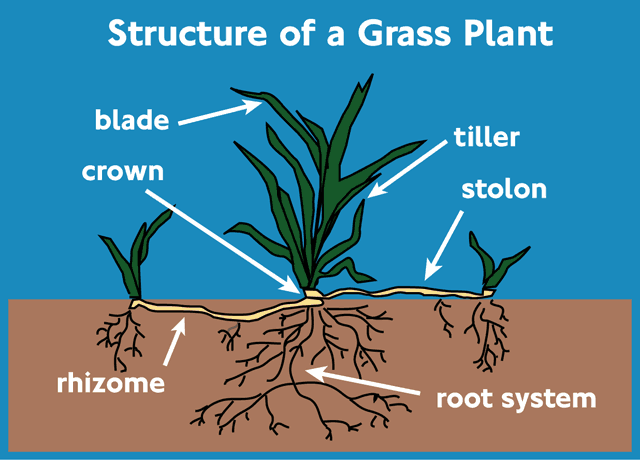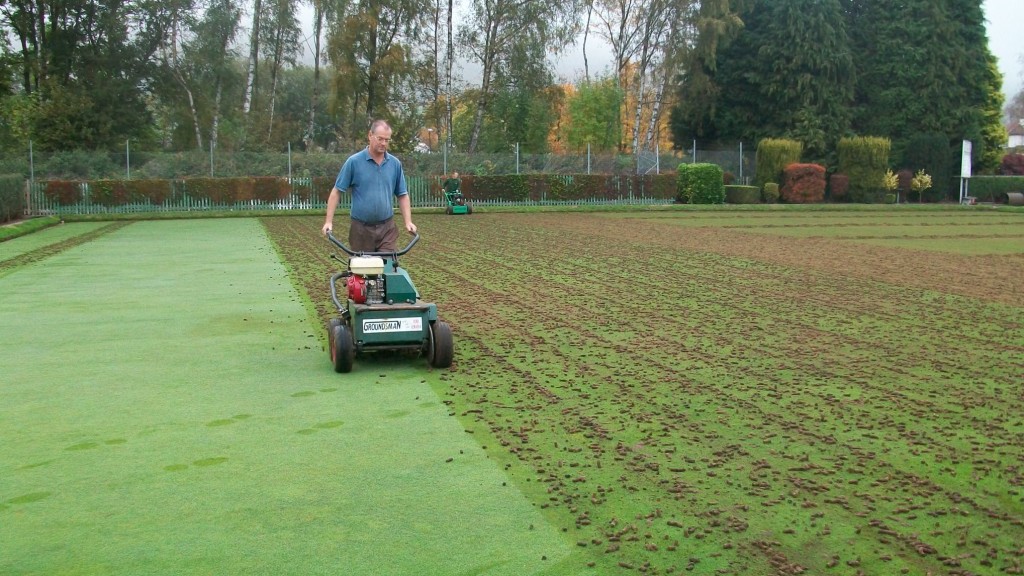I often talk about close mowing here on bowls central and don’t usually recommend a cutting height of less than 4.5mm even in perfect growing conditions. Of course the mower blades will have been set higher during the recent very dry and very hot weather to allow the plants to retain more leaf area and therefore more moisture. An understanding of turf grass growth characteristics is important in helping you to make the correct maintenance decisions.
Crown
Another reason for avoiding excessively close mowing is the irreversible damage that can be done to the grass plant, especially if the crown is damaged. The plant can survive a lot of trauma as long as the crown remains intact, so great care should be taken to avoid scalping the green too close.
In my recent post about turf grass shoot structures I mentioned the plant stem as one particular shoot structure used by turf grass plants. You can think of the crown of the grass plant as a stem that has been squashed down, concertina style to the ground. All of the internodes where leaves arise are stacked alternately into a very compact stem that barely rises above the soil surface. This critical part of the grass plant includes the upper stem apex and the same bud meristems (where new shoots arise) as the longer stems we looked at before, only in this form the nodes are all tightly stacked with no elongation of the internodal area to speak of. Finally there are the lower meristematic nodes and it is here that the plant can initiate new roots and shoots.
Lateral Shoots
New lateral shoots can be initiated from vegetative meristems or buds in the base of leaves or from stem nodes, rhizomes or stolons. These lateral shoots can be tillers, stolons or rhizomes depending on species and conditions.
Intravaginal Growth
Young stems can grow out from the basal sheath of the the grass leaf and this is called intravaginal growth.
Tillers
The main turf grass plant characteristic that allows the formation of dense sports turf is that of tillering. Tillers originate intravaginally from the plant stem and can be encouraged by
- mowing below 30mm
- ready availability of Nitrogen
- good sunlight levels and reduced shade
- good carbohydrate reserves in the plant (strong photosynthesis activity)
Some grass species employ tillering exclusively and therfore form a bunch type growth habit. These include colonial bentgrass, hard fescue, sheep’s fescue, chewings fescue, annual ryegrass, perenneial ryegrass and annual meadowgrass.
Extravaginal Growth
Extravaginal growth is when young stems grow vegatatively by pushing through the lower part of the basal leaf sheath. This type of growth is split into two main groups:
Stolons
A stolon is a secondary shoot that grows extravaginally above ground with considerable elongation of the stem horizontally.
- this allows the plant to initiate a spreading (sometimes called creeping) growth habit.
- creates a secondary carbohydrate reserve for emergencies
- creates opportuities for spreading vegatively as each node on the stem can produce new daughter plants by producing roots and shoots.
- increases the knitting together and strength of the turf.
Common stoloniferous grasses include velvet bentgrass and creeping bentgrass
Rhizomes
Rhizomes are similar to stolons except that they break through the leaf basal sheaf below ground and spread by means of elongated underground lateral stems. This characteristic:
- gives the plant a strong lateral, spreading growth habit.
- adds to turf strength and integrity
- provides a secondary carbohydrate store for emergency growth requirements
- helps turf to have a strong recuperative potential from wear and injury
- allows for improved dormancy survival after heat and drought
- initiates new plants at stem nodules in the same way that stolons do except underground.
Rhizomatous grass plants grow strongly when conditions provide for their optimum temperature ranges (150-240C for cool season and 270-350C for warm season grasses). Long day length, high light intensity and lower nitrogen availability also favour their success.
To provide the thickening of turf density the rhizome must turn upwards towards the surface to allow for new shoots to be initiated and this is favoured by light exposure (e.g. by aeration, brushing etc), low CO2 levels in the soil (aeration), heat stress (not over watering), shorter photo period (day length) and good nitrogen availability.
The rhizomatous grasses include many of the red fescues and smooth stalked meadow grass.
Integrated Secondary Lateral Growth Habits
Many of the most commonly used warm season turf grasses employ stolons and rhizomes to create a very vigorous and tight knit turf that recuperates well from stress and provides high wear tolerance. These include many of the Bermuda, Zoysia and Seashore Paspallum grasses.
Inflorescence

This is the structure put up by the plant in order to create and spread its seed. It is an erect flowering structure and the seeds are formed on individual spikelets of it. Shortenting day length and cooling temperatures initiate this in cool season grasses. This isn’t usually a feature of quality turfgrass as it depends on grass being allowed to grow naturally to its full height, but it can be seen in turf on annual meadow grass in the spring and early summer.
If you have anything to add or any questions please leave a comment or drop me a line.



